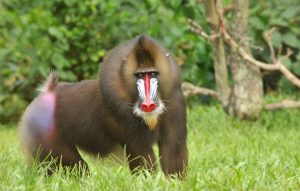
30 interesting facts about doves
- 👁️ 434
Doves are emblematic birds known worldwide for their symbolic meanings of peace and love. These gentle creatures belong to the Columbidae family, which includes both doves and pigeons. Often featured in various cultural, religious, and ceremonial contexts, doves have a fascinating biology and behavior that contribute to their popularity and significance in human folklore and symbolism. Their calming coo and graceful flight patterns have captivated human interest for centuries, making them a subject of admiration and study.
- There are over 300 species of doves and pigeons worldwide.
- Doves are found on every continent except Antarctica.
- The term ‘dove’ usually refers to the smaller species within the Columbidae family, while ‘pigeon’ refers to the larger ones.
- Doves can see in color and have excellent vision, which helps them navigate during flight.
- They are one of the few bird species that can drink water by sucking it up directly without needing to tilt their heads back.
- Doves are monogamous birds and often mate for life.
- They can have up to six broods in a single year in warmer climates.
- Doves produce a milk-like substance to feed their young, known as crop milk or pigeon milk.
- The mourning dove is one of the most common and widespread of all North American birds.
- Doves are strong fliers; some species like the homing pigeon are renowned for their ability to return to their nests over long distances.
- The symbol of the dove with an olive branch in its beak as a sign of peace originates from the biblical story of Noah’s Ark.
- Doves are capable of making a variety of sounds, and their cooing is a familiar sound to many.
- In the wild, doves primarily feed on seeds, fruits, and plants.
- Unlike many birds, doves often feed on the ground.
- The lifespan of a dove varies widely depending on the species and environmental factors, ranging from 1.5 years in the wild for some species to over 20 years in captivity for others.
- Doves have been used as messengers in various cultures due to their homing abilities.
- Their feathers are very soft, and their sleek body design gives them an aerodynamic advantage.
- The dove is a popular motif in literature, music, and art across various cultures.
- In Christianity, the dove is often associated with the Holy Spirit.
- Doves can fly at speeds up to 55 miles per hour.
- They play a crucial role in the ecosystem by dispersing seeds, which helps in plant regeneration.
- Doves are often used in release ceremonies at weddings and funerals due to their symbolism of love, peace, and spirits.
- White doves are specially bred for their distinct color and are most commonly used in various ceremonies.
- The largest species of dove is the crowned pigeon of New Guinea, which can weigh over 2 kilograms.
- The smallest dove species is the New World ground dove, which is about the size of a sparrow.
- Doves have a rapid rate of heartbeats; their heart can beat up to 600 times per minute.
- In terms of reproduction, doves are incredibly efficient breeders.
- Urban environments have significantly influenced the evolution and behavior of many dove species, particularly pigeons.
- Many dove species are considered pests in cities due to their droppings and the diseases they can carry.
- Despite their abundance, some dove species are threatened with extinction due to habitat loss and hunting.
Doves are not just symbols of peace or aesthetic elements in our surroundings; they are creatures with complex behaviors and significant ecological roles. Their widespread presence across the globe highlights their adaptability and the diverse environments they inhabit. The enduring fascination with doves underscores their importance in human culture and wildlife, reminding us of the beauty and peace that nature offers. Understanding and protecting these birds ensure that future generations can also appreciate and learn from them.











